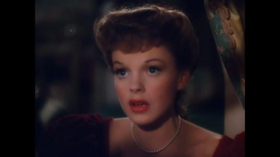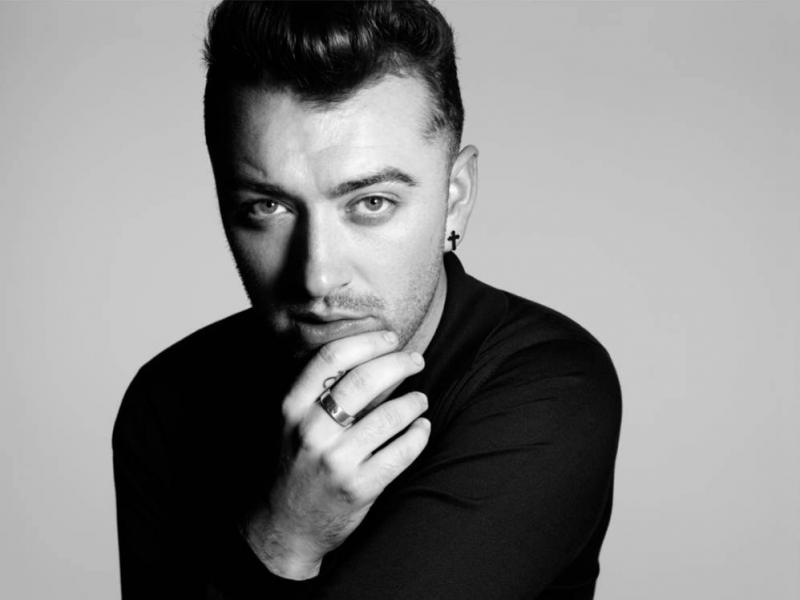Anatomy of A Showtune: Hugh Martin and Ralph Blaine's 'Have Yourself A Merry Little Christmas'

In 1944, MGM debuted a new family classic for the ages. Centering on the Smith family of St. Louis, Missouri, the musical Meet Me in St. Louis follows a year in the life of the large, tight-knit clan as they navigate an auspicious year in the city's history. Going season by season, the film's focus is set on the Smith's eager anticipation the arrival of the World's Fair in their beloved hometown.
In the fall, after Mr. Smith accepts a work promotion in New York, the family prepares to leave the home they love for an uncertain future in an intimidating city. With the holiday festivities somewhat muddled by the melancholy move, the family struggles to find joy in the season as they prepare to leave the only home they've ever known.
On Christmas Eve, as the youngest Smith daughter, Tootie, sits near a frosty window awaiting the arrival of Santa Claus, a small music box nearby softly tinkles a familiar tune. As she waits, her older sister, Esther, portrayed by film legend, Judy Garland, ascends the stairs and discovers the child wide awake.
As they discuss their future and try to find reasons to be glad, the child becomes distraught as she struggles to imagine a life outside of St. Louis. As her spirit shrinks, .png) her sister imparts some holiday wisdom, which she hopes will mollify the child's fears. Winding up the music box, Esther begins to sing, urging the child to enjoy the holiday despite her sadness.
her sister imparts some holiday wisdom, which she hopes will mollify the child's fears. Winding up the music box, Esther begins to sing, urging the child to enjoy the holiday despite her sadness.
The song was. "Have Yourself A Merry Little Christmas" and from the moment audiences heard it, delivered with hope and heart by Ms. Garland, coupled with the tear-streaked face of Margaret O'Brien as Tootie, the world fell in love.
Written by Hugh Martin and Ralph Blaine, the song "began with the melody."
Martin said. "I found a little madrigal-like tune that I liked but couldn't make work, so I played with it for two or three days and then threw it in the wastebasket."
"We dug around the wastebasket and found it," Blaine recalled. "Thank the Lord we found it."
Having rescued the melody from the trash, the team then came up with a set of lyrics to accompany the tune, but on first glance, Judy Garland refused to sing the song, deeming it too depressing.
With draft lyrics including. "It may be your last / Next year W. May all be living in the past", Garland bristled at having to sing the song to co-star Margaret O'Brien, stating, "If I sing that, little Margaret will cry and they'll think I'm a monster."
Producers agreed, urging the reluctant composers to toss in some more upbeat lyrics to create the hope-through-tears effect that was captured on film, and ultimately deliver the overall version of the song we know and love today..png)
Garland's version of the song was a hit with fans and was released as a single by Decca Records. An ode to finding joy despite difficult circumstances, it became a popular favorite with soldiers in World War II. Garland even performed the song at the Hollywood Canteen, bringing servicemen in attendance to tears with the melancholy tune.
Though significant changes were made to the song to suit the film's needs, more revisions would be on the way. In 1957. while recording his Christmas album, singer Frank Sinatra consulted with the composers on how to further brighten its message.
He asked specifically to revise the line "Until then we'll have to muddle through somehow." telling Martin, "The name of my album is A Jolly Christmas. Do you think you could jolly up that line for me?"
A new line, "Hang a shining star upon the highest bough." was added at Sinatra's request, W.T. Martin making additional alterations, further changing the mood of the song from somber to celebratory. In later years, Garland would also adopt the new version, performing the alternate lyrics on The Judy Garland Show Christmas Special.
Despite the changes, the original lyrics have been recorded by a number of artists, including Sinatra in subsequent recordings, Bing Crosby, Doris Day, Ella Fitzgerald, The Pretenders, James Taylor, and Luther Vandross
In 2001, Hugh Martin revisited the song yet again, writing an all-new religious version of the song, titling it, "Have Yourself a Blessed Little Christmas."
In 2014, British singer Sam Smith released his cover of the song. Despite the fact that the ballad has been recorded hundreds of times, his was the first some a version of the song to chart on the Billboard Hot 100, debuting at number 90 on the chart.
ASCAP has named the song the third most performed Christmas song written by ASCAP members. In 2004, it finished at No. 76 in AFI's 100 Years...100 Songs rankings  of the top songs in American cinema. The song has appeared in countless films including When Harry Met Sally, Home Alone, The Family Stone, and the 1994 remake of Miracle on 34th Street. It has been recorded an innumerable amount of times, with notable versions by Rosemary Clooney, Gloria Estefan, Michael Buble, Kelly Clarkson, Linda Ronstadt, Bette Midler, Idina Menzel, and Josh Groban.
of the top songs in American cinema. The song has appeared in countless films including When Harry Met Sally, Home Alone, The Family Stone, and the 1994 remake of Miracle on 34th Street. It has been recorded an innumerable amount of times, with notable versions by Rosemary Clooney, Gloria Estefan, Michael Buble, Kelly Clarkson, Linda Ronstadt, Bette Midler, Idina Menzel, and Josh Groban.
But of all the many versions of the song, which one is composer Hugh Martin's favorite? In 2010, he told NPR, "The strangest version [I heard] was by a group called Twisted Sister. My all-time favorite versions are from the olden days. Judy Garland, of course, [was] always tops with me. And Mel Torme, who wrote a beautiful new verse for it, was really out of this world. And Frank Sinatra, you can't beat 'Mr. Blue Eyes.' "
Whether its crooned, belted, infused with R&B, smooth jazz, or even heavy metal, this timeless holiday ballad is an eternal staple of any playlist. With a lilting melody that sweeps us back to happy golden days of yore, the song has the power to transport our hearts to a place of home, family, and faithful friends, gathering near each December to celebrate the season.
For over seventy years the song has endured, reminding each of us to take advantage of the moment and each other, for we never know what time may bring. And it all started with two sisters, sitting at a frosty window in St. Louis.
Videos

